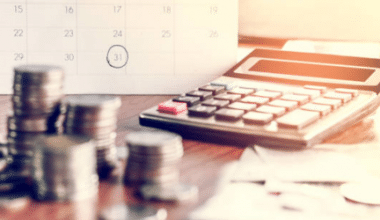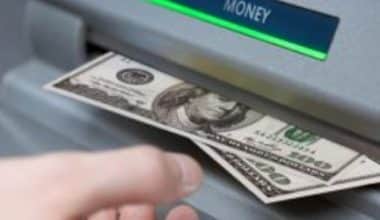Anyone launching or operating a sole proprietorship would be wise to take into account sole proprietor loans, commonly referred to as lone trader loans.
Small firms that meet the requirements can use sole proprietorship loans to start operations or expand already established ones. Small business owners can use sole proprietor loans to pay for things like inventory, advertising, and working capital, among other things.
Sole proprietorship loans, also known as loans for sole traders, are frequently less expensive than other conventional business loans. They are a great option for sole proprietors and small businesses just starting out. They usually cost between a few thousand dollars and $250,000.
You want to know more about sole proprietorship loan? Read on!
What Is Sole Proprietorship?
A sole proprietorship is an unincorporated company with a single owner. When you own a sole proprietorship, you are accountable for any debts, obligations, and losses incurred by the company. Additionally, you are entitled to all revenues.
As an individual business owner, you could operate as an LLC or a corporation as an alternative to forming a sole proprietorship, limiting your personal liability. You could, however, be required to pay additional taxes.
A sole proprietorship is simple to create, but there are many things to know about the corporate structure. To learn everything you need to know about operating a business as a sole proprietor, keep reading.
Sole Proprietorship Loan
Generally, sole proprietorship loans are loans that are specifically designed for business owners who run sole proprietorships. Sole proprietorship loans are a type of business finance (also called loans to sole traders).
Term loans are typical of them. Lenders who provide loans to sole owners are mostly banks and online lenders.
Depending on the financial institutions, the terms of a sole proprietor loan may differ, but as compared to other loans, they often have:
- Longer terms of repayment and lower interest rates
- Business Loans For Single Owners
Advantages And Disadvantages
Lending to a sole proprietorship has some notable benefits and drawbacks. We highlight here the most significant ones:
Advantages
- Generally speaking, the application procedure is simple.
- They can be utilized for a number of commercial activities, such as working capital, inventory purchases, and equipment purchases.
- Lender criteria are typically quite minimal.
Disadvantages
- Compared to other loan kinds, they frequently have higher interest rates. But once more, this is because financing to a sole proprietor entails the lender taking on greater risk.
- A sole proprietorship loan typically has a shorter repayment period. The borrower may have to make greater monthly payments as a result, though.
How Are Loans for Sole Proprietors Used?
A potential business owner should know how to use the funds after comprehending sole proprietor loans. The loans are intended to help you start or expand your business.
Using a sole proprietorship loan or a sole trader loan, you could:
Daily Operations:
A sole proprietor may use loan proceeds to cover necessary expenses. For instance, a handyman must pay to fix their tools, and a wedding photographer must purchase a train ticket.
Stock and Supplies:
A cleaner may use funds from a sole proprietor loan to pay for cleaning supplies, while a hairdresser may use them to keep stock to sell to customers. We can use it with the loan proceeds if you need it to run your business.
Marketing:
You can broaden the appeal of your brand by using proprietor loans. For instance, the money might enable a fitness trainer to buy social media ads or place an advertisement in a magazine.
Loans to sole proprietors make it feasible to allocate funds more freely than would otherwise be possible. But managing a small firm requires strict budgeting. Marketing and promotion are both important for a business to grow, but companies often give them up when they have to make hard decisions.
Criteria for Applying for the Best Sole Proprietor Funding
Eligibility
You must meet the following criteria in order to approve you:
- Only 18 years or older for U.S. citizens and permanent residents
- You need to have been in business for at least six months.
- 500 or higher on the credit report
Limits to Funding
Up to $250K in funding is available for eligible sole prop enterprises. The amount of the approval will be based on a study of your company’s financial records.
Size of Term
In most cases, the repayment periods last between one and five years. This could change based on how much money you get and how much business you do.
Sole Proprietorship Loan Bad Credit
There are ways to obtain a small business loan, even if you have a poor business credit score. When you’re prepared to accomplish it, use these suggestions and tips:
- Before you sign anything, be certain that you are aware of the loan’s conditions. The interest rate, regular payments, and payback timeline are all included.
- For the best deal, comparison shop. It’s crucial to evaluate offers because rates and terms might differ dramatically amongst lenders.
- Be ready to pledge collateral. In the event that you cannot repay the loan, many lenders want collateral. These assets may include your house, vehicle, or business. Financial statements and a strong company plan should be prepared.
Start-up loans for businesses with bad credit
For their business aspirations to come into reality, startups with bad credit will probably need to turn to online lenders.
#1. A business credit line
Flexible company lines of credit are available to start-ups with bad credit from online lenders like Lendio. Lendio just requires a minimum credit score of 560. And you only pay interest on the money you really utilize. You must earn at least $50,000 annually to use Lendio, which is one disadvantage.
#2. Short-term Loan
If you have a credit score of 600, you are eligible to borrow up to $250K with one of these loans. They might have hefty interest rates, but they’re an excellent choice for a onetime, specific purchase.
#3. Student Loans
Bad credit can make a personal loan a smart alternative for small businesses, but you should be aware that the interest rate will probably be higher. Any business expense, including costs associated with inventory or marketing, may be paid for using a personal loan.
SBA Sole Proprietorship Loan
Being a lone owner can easily wear you out mentally and physically due to the constant demands of running a business. You could feel stretched thin by the danger of a world disaster right now. Others may struggle to reopen after closing their doors, while some firms can handle internet orders or provide drive-thru service.
Numerous sole proprietorships are suffering greatly as the economy responds to the current Coronavirus outbreak. Sole owners might seek assistance from organizations like the Small Business Administration when things are chaotic (SBA).
But in light of the current pandemic, there is frequently misunderstanding regarding sole proprietorship eligibility for disaster relief loans.
SBA Loan Programs
#1. SBA Microloans
A nationwide network of nonprofit lending groups with government backing offers SBA microloans.
A small business can benefit from microloans in a number of ways, including by being rebuilt, reopened, repaired, enhanced, or improved. Working capital, supplies or inventory, fixtures, furniture, machinery, and equipment are all examples of expenditures that have been approved.
You may borrow up to $50,000 with an SBA microloan, with a maximum repayment term of six years. As of August 2022, SBA micro loans have interest rates ranging from 8% to 13%.
#2. SBA 7 (a) Small Loans
The SBA’s flagship and most well-known loan program is the 7 (a) loan program. Up to $5 million is available and can be used for a range of things, including operating capital, equipment purchases, and business expansion expenses. The profits can finance even the acquisition of real estate from a business.
Depending on the loan amount and length, the interest rate on an SBA 7(a) loan is tied to a base rate—prime, LIBOR, or an optional peg rate—plus 2.25% to 4.75%.
The maximum credit period for real estate is 15 years, whereas the maximum loan term for equipment, working capital, and inventory loans is 10.
#3. Loans from SBA Express
The 7(a) program covers SBA Express loans, which have a maximum SBA guarantee of 50% and a maximum loan amount of $500,000. These loans are available up to $500,000.
Individual lenders and borrowers will ultimately decide on the interest rate, which cannot be higher than the prime + 6.5% cap set by the SBA. Lines of credit have up to a seven-year repayment term, real estate loans have a 25-year term, and other loans have a ten-year term.
Can You Get an SBA Loan As a Sole Proprietor?
Yes, through the PPP loan program, sole proprietors can obtain much-needed finance; if they wisely employ the money, they may even be able to have the loans turned into tax-free grants.
Can I Get PPP Loan As a Sole Proprietor?
Yes, you can get the PPP Loan as a sole proprietor.
How Much Can a Sole Proprietor Get From PPP?
The PPP caps pay at a $100,000 yearly salary. Therefore, the maximum PPP loan for single proprietors or independent contractors without staff is $20,833.
What Are The Disadvantages of Sole Proprietorship Loan?
Since there is no legal distinction between personal and company assets, you are subject to infinite liability for obligations. Your ability to raise money is constrained. You alone are responsible for all daily business choices. High-caliber personnel might be challenging to keep.
Can Sole Proprietor Get EIDL Grant?
Yes! The EIDL is not limited to a particular class of entity. You are qualified to apply for the EIDL loan and advance grant if you are self-employed or were a sole proprietor before February 2020.
FAQs
What does a PPP loan mean?
The Paycheck Protection Program (PPP), a federal assistance program established by Congress, is carried out in collaboration with the Small Business Administration. All participating banks are required to follow established policies, guidelines, procedures, and protocols.
What does an Economic Injury Disaster Loan mean?
The SBA created the Economic Injury Disaster Loan in reaction to the COVID-19 outbreak, and it accepts requests for emergency advances of up to $10,000 from small business owners. A more substantial loan could then be granted to the small business owner.
What difficulties do a sole proprietor face?
Your personal assets could be at risk when operating as a sole proprietor, which is one of the main difficulties. A lone proprietor has unlimited culpability for the debts of the business, in contrast to a corporation, which has restricted liability.
Conclusion
Sole Proprietorship Loan is one of the best available options you can get as a sole proprietor. We have discussed some import criteria on this and all you should know about the sole proprietorship loan.
- How To Apply For PPP Loan Forgiveness For Self-Employed
- How to Apply for Best Business Loans in 2023/Step-By-Step Guide
- BUSINESS LOANS BAD CREDIT: Definition and How to Get It
- BUSINESS TOOLS FOR STARTUPS: Free Tools And Best Tools For Start Up
- BUSINESS PLAN TOOLS: What It Is And All You Need To Know






